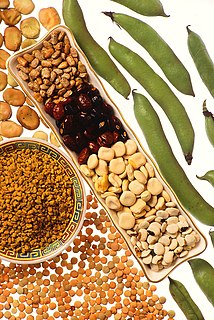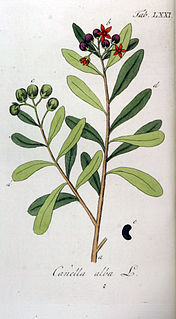
Botany, also called plant science(s), plant biology or phytology, is the science of plant life and a branch of biology. A botanist, plant scientist or phytologist is a scientist who specialises in this field. The term "botany" comes from the Ancient Greek word βοτάνη (botanē) meaning "pasture", "grass", or "fodder"; βοτάνη is in turn derived from βόσκειν (boskein), "to feed" or "to graze". Traditionally, botany has also included the study of fungi and algae by mycologists and phycologists respectively, with the study of these three groups of organisms remaining within the sphere of interest of the International Botanical Congress. Nowadays, botanists study approximately 410,000 species of land plants of which some 391,000 species are vascular plants, and approximately 20,000 are bryophytes.

Photosynthesis is a process used by plants and other organisms to convert light energy into chemical energy that can later be released to fuel the organisms' activities. This chemical energy is stored in carbohydrate molecules, such as sugars, which are synthesized from carbon dioxide and water – hence the name photosynthesis, from the Greek φῶς, phōs, "light", and σύνθεσις, synthesis, "putting together". In most cases, oxygen is also released as a waste product. Most plants, most algae, and cyanobacteria perform photosynthesis; such organisms are called photoautotrophs. Photosynthesis is largely responsible for producing and maintaining the oxygen content of the Earth's atmosphere, and supplies all of the organic compounds and most of the energy necessary for life on Earth.

Robert Anthony Plant is an English singer, songwriter, and musician, best known as the lead singer and lyricist of the rock band Led Zeppelin. Plant is regarded as one of the greatest vocalists in the history of rock music.

Organs are groups of tissues with similar functions. Plant and animal life relies on many organs that coexist in organ systems.

A legume is a plant in the family Fabaceae, or the fruit or seed of such a plant. Legumes are grown agriculturally, primarily for human consumption, for livestock forage and silage, and as soil-enhancing green manure. Well-known legumes include alfalfa, clover, peas, chickpeas, lentils, lupin bean, mesquite, carob, soybeans, peanuts and tamarind. Legumes produce a botanically unique type of fruit – a simple dry fruit that develops from a simple carpel and usually dehisces on two sides. A common name for this type of fruit is a pod, although the term "pod" is also applied to a number of other fruit types, such as that of vanilla and of the radish.

The Canellaceae are a family of flowering plants in the order Canellales. The order includes only one other family, the Winteraceae. Canellaceae is native to the Afrotropic and Neotropic ecozones. They are small to medium trees, rarely shrubs, evergreen and aromatic. The flowers and fruit are often red.

A perennial plant or simply perennial is a plant that lives more than two years. Some sources cite perennial plants being plants that live more than three years. The term is often used to differentiate a plant from shorter-lived annuals and biennials. The term is also widely used to distinguish plants with little or no woody growth from trees and shrubs, which are also technically perennials.

Persea is a genus of about 150 species of evergreen trees belonging to the laurel family, Lauraceae. The best-known member of the genus is the avocado, P. americana, widely cultivated in subtropical regions for its large, edible fruit.

Plants are mainly multicellular, predominantly photosynthetic eukaryotes of the kingdom Plantae. Historically, plants were treated as one of two kingdoms including all living things that were not animals, and all algae and fungi were treated as plants. However, all current definitions of Plantae exclude the fungi and some algae, as well as the prokaryotes. By one definition, plants form the clade Viridiplantae, a group that includes the flowering plants, conifers and other gymnosperms, ferns and their allies, hornworts, liverworts, mosses and the green algae, but excludes the red and brown algae.
Cinnamodendron is a genus of plants in family Canellaceae described as a genus in 1840.
Cinnamodendron angustifolium is a species of flowering plant in the Canellaceae family. It is found growing on the Massif de la Hotte mountain range in southwestern Haiti.
Cinnamodendron axillare is a species of flowering plant in the Canellaceae family. It is found in the state of Rio de Janeiro in Brazil.
Cinnamodendron cubense is a species of flowering plant in the family Canellaceae. It is a rare species endemic to Cuba.
Cinnamodendron dinisii is a species of flowering plant in the Canellaceae family. It is found in Southern Brazil.
Cinnamodendron ekmanii is a species of flowering plant in the Canellaceae family. It is found in the Dominican Republic.
Cinnamodendron occhionianum is a species of flowering plant in the Canellaceae family. It is found in the state of São Paulo in Brazil.
Cinnamodendron sampaioanum is a species of flowering plant in the Canellaceae family. It is found in the state of Rio de Janeiro in Brazil.
Cinnamodendron tenuifolium is a species of flowering plant in the Canellaceae family. It is found in Suriname.









